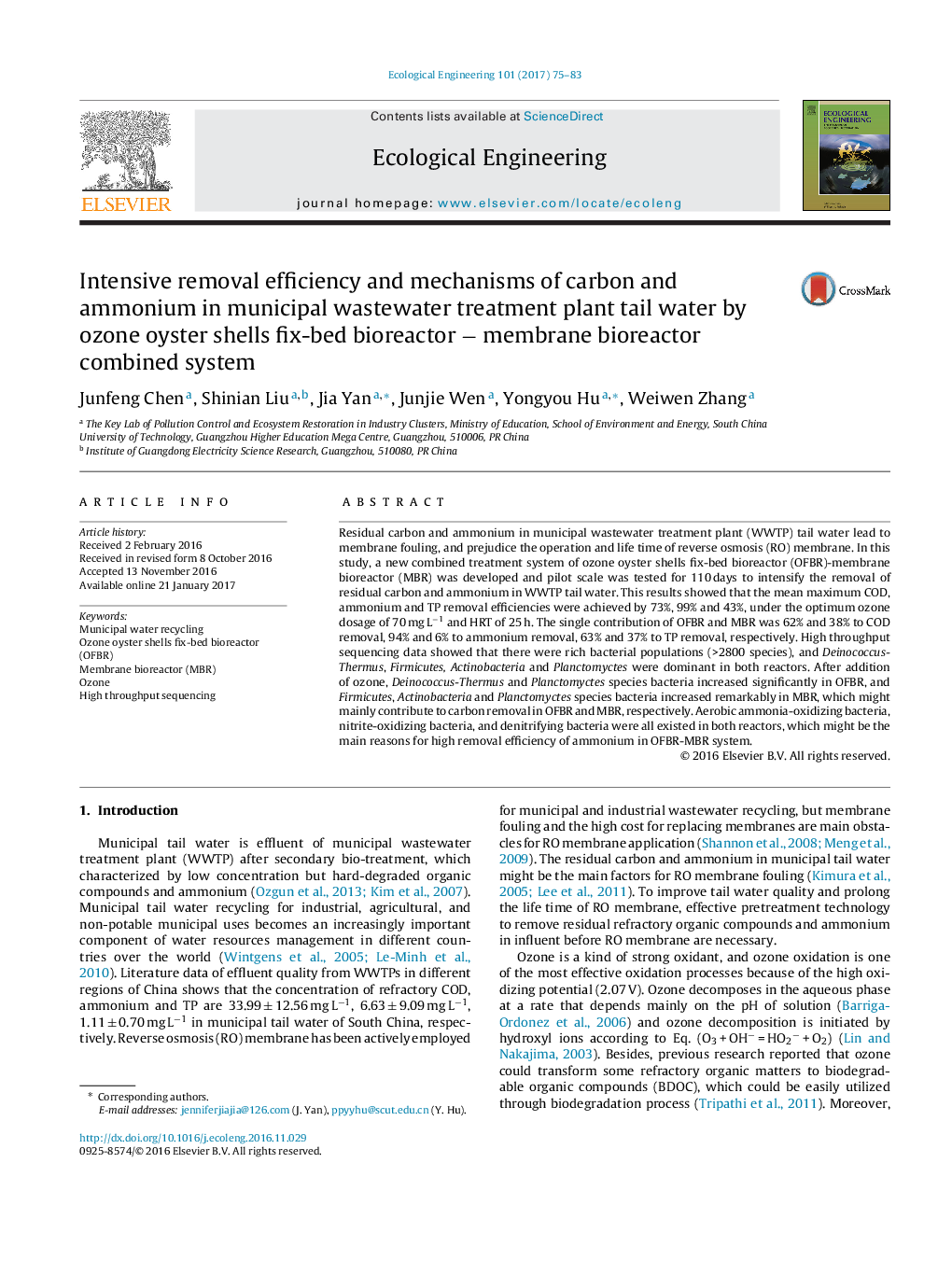| Article ID | Journal | Published Year | Pages | File Type |
|---|---|---|---|---|
| 5743916 | Ecological Engineering | 2017 | 9 Pages |
â¢OFBR-MBR system was studied for intensive carbon and ammonium removal of municipal tail water.â¢The optimum ozone dosage concentration and HRT of OFBR-MBR system were 70 mg Lâ1 and 25 h, respectively.â¢Bacterial community composition in both OFBR and MBR were analyzed before and after ozone addition.â¢Potential application of OFBR-MBR (protection for RO membrane system) was discussed.
Residual carbon and ammonium in municipal wastewater treatment plant (WWTP) tail water lead to membrane fouling, and prejudice the operation and life time of reverse osmosis (RO) membrane. In this study, a new combined treatment system of ozone oyster shells fix-bed bioreactor (OFBR)-membrane bioreactor (MBR) was developed and pilot scale was tested for 110 days to intensify the removal of residual carbon and ammonium in WWTP tail water. This results showed that the mean maximum COD, ammonium and TP removal efficiencies were achieved by 73%, 99% and 43%, under the optimum ozone dosage of 70 mg Lâ1 and HRT of 25 h. The single contribution of OFBR and MBR was 62% and 38% to COD removal, 94% and 6% to ammonium removal, 63% and 37% to TP removal, respectively. High throughput sequencing data showed that there were rich bacterial populations (>2800 species), and Deinococcus-Thermus, Firmicutes, Actinobacteria and Planctomyctes were dominant in both reactors. After addition of ozone, Deinococcus-Thermus and Planctomyctes species bacteria increased significantly in OFBR, and Firmicutes, Actinobacteria and Planctomyctes species bacteria increased remarkably in MBR, which might mainly contribute to carbon removal in OFBR and MBR, respectively. Aerobic ammonia-oxidizing bacteria, nitrite-oxidizing bacteria, and denitrifying bacteria were all existed in both reactors, which might be the main reasons for high removal efficiency of ammonium in OFBR-MBR system.
